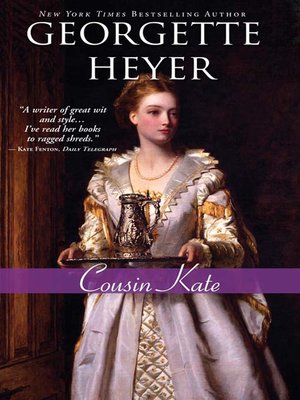

The marriage between Heyer's lighthearted Regency romance sensibilities and darker Gothic suspense never quite fell into place for me. Philip wants to be there for Kate, but Kate isn't sure that that's the right solution.

And for some reason Kate's letters to Sarah Nidd are never answered, and she starts to feel isolated and uncomfortable. especially since people keep hinting that Minerva has ulterior motives. Torquil's older cousin Philip soon shows up, and sparks fly between him and Kate even though she resents him, because of Reasons.īut odd incidents keep occurring at Staplewood, Torquil's erratic behavior is becoming more of a problem, and Minerva Broome's generosity to Kate starts to feel suffocating. strange.Īt first all seems reasonably good: Sir Timothy is kind although distant, Torquil seems to enjoy Kate's company, and Lady Broome is overwhelmingly generous with new clothing and presents for Kate. Minerva, a extremely determined and managing type, swoops in to carry the startled Kate off to Staplewood, Minerva's manor, where she lives with her elderly ailing husband, Sir Timothy, and her also ailing son, 19 year old Torquil, who is drop-dead gorgeous but also sulky, spoiled and. Her devoted and loving nanny, Sarah Nidd, secretly writes a letter to Kate's one relative that seems likely to be of help: Kate's aunt, Lady Minerva Broome. Kate Malvern, alone in the world at age 23, has just lost her governess job because the wrong guy made a pass at her, can't get another job, and has no money and nowhere to go except her old nanny's home, which isn't a good permanent solution for her. In Cousin Kate, one of Georgette Heyer's later books (written in 1968, 46 years after her first book, The Black Moth, was published), Georgette tried a Gothic spin on one of her historical romances, with distinctly mixed results. Heyer remains a popular and much-loved author, known for essentially establishing the historical romance genre and its subgenre Regency romance. While some critics thought her novels were too detailed, others considered the level of detail to be Heyer's greatest asset. Her Georgian and Regencies romances were inspired by Jane Austen. She wrote one novel using the pseudonym Stella Martin.

She made no appearances, never gave an interview and only answered fan letters herself if they made an interesting historical point. Heyer was an intensely private person who remained a best selling author all her life without the aid of publicity. Beginning in 1932, Heyer released one romance novel and one thriller each year. Rougier later became a barrister and he often provided basic plot outlines for her thrillers. In 1925 she married George Ronald Rougier, a mining engineer.

Her writing career began in 1921, when she turned a story for her younger brother into the novel The Black Moth. Georgette Heyer was a prolific historical romance and detective fiction novelist.


 0 kommentar(er)
0 kommentar(er)
